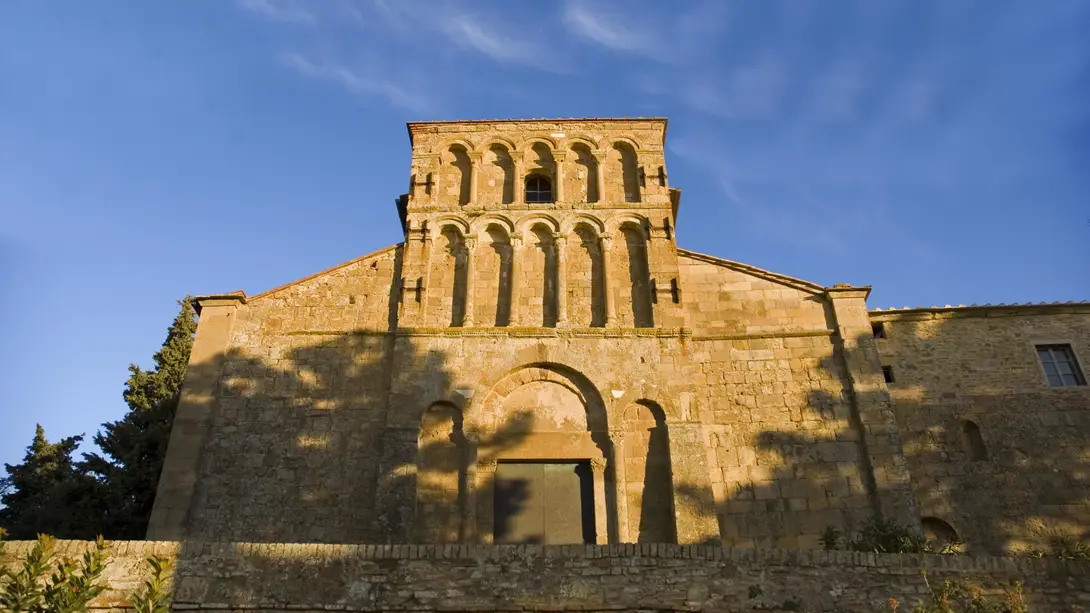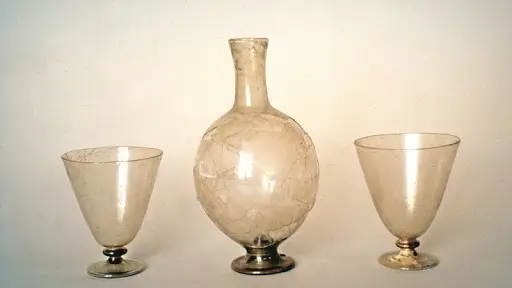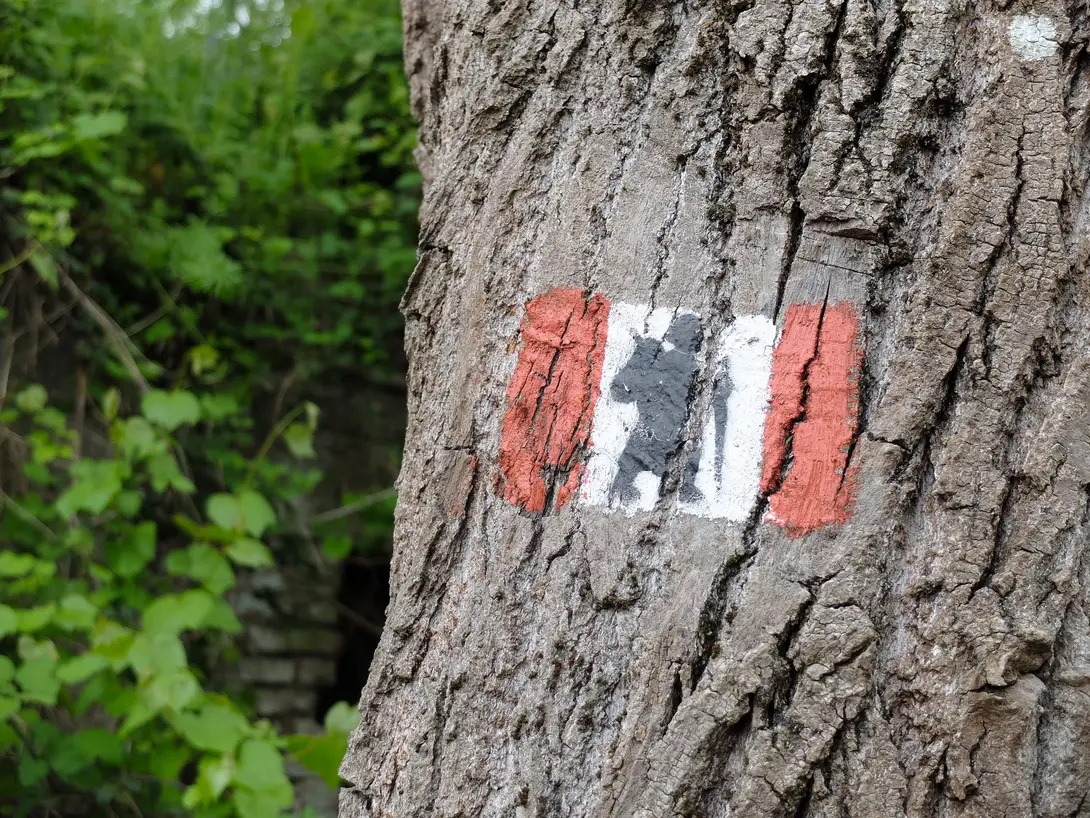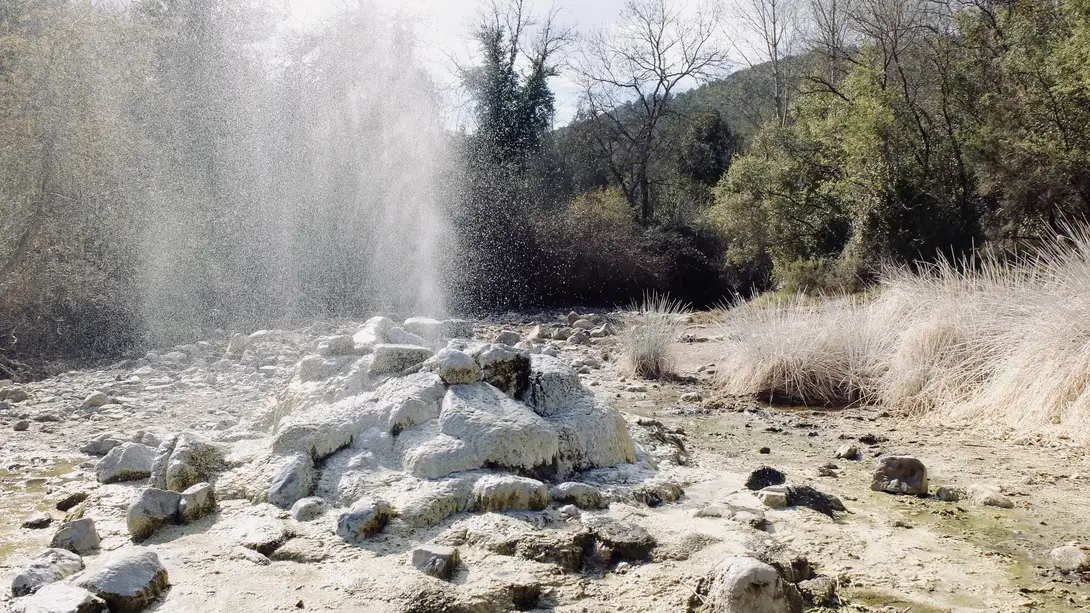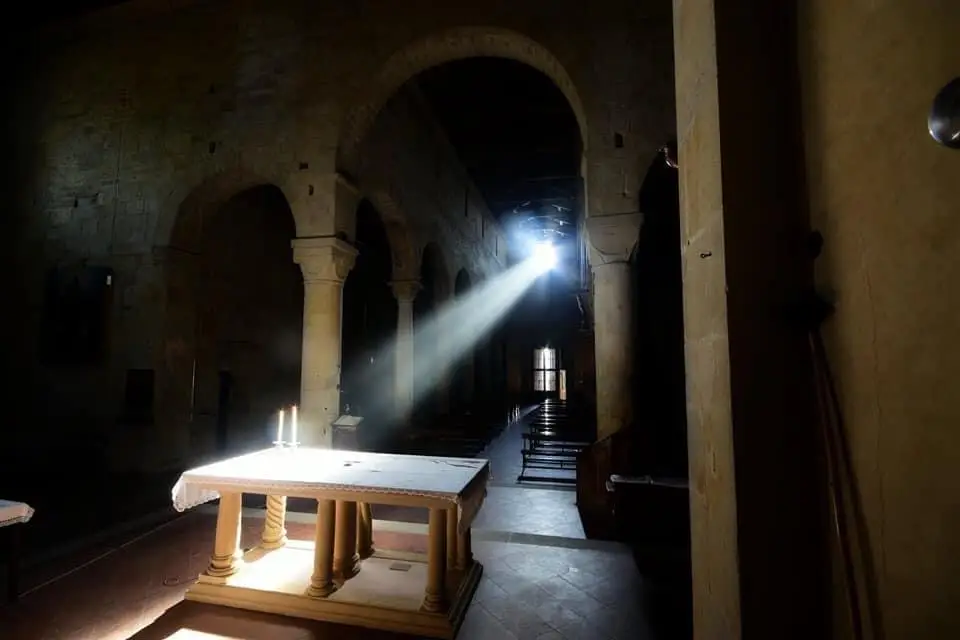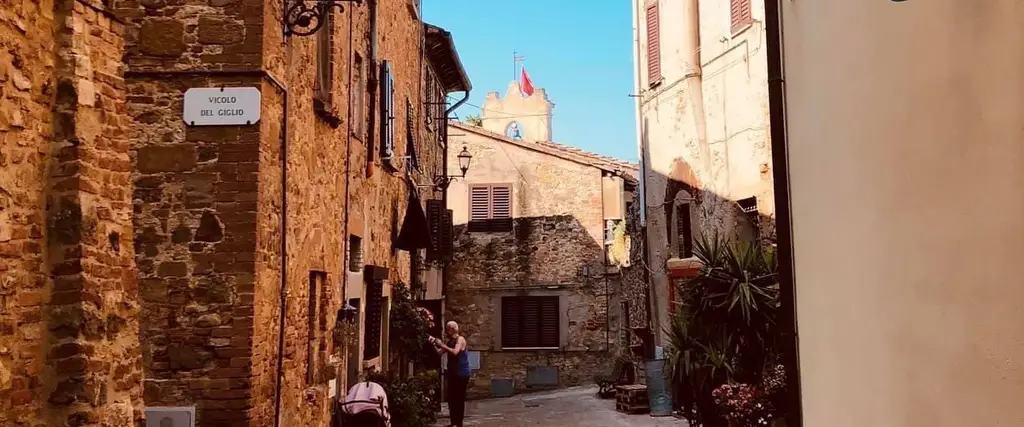
Gambassi Terme, a hamlet on the Via Francigena route
Gambassi Terme, nestled in its green hills, is a perfect destination for lovers of nature and history.
Thanks to its strategic position along two important communication routes, such as the ancient "northern" via Volterrana or Salaiola, already used by the Etruscans on the Florence – Volterra route and the "coastline" or hillside via Francigena, traveled since ancient times by pilgrims, the Gambassi hamlet is a place that is historically poulated since old times and suited to hospitality.
And it is exactly while walking along the via Francigena, heading for the old town, that the majestic parish church of Santa Maria a Chianni comes into view, one of the oldest Romanesque monuments in the Valdelsa area, dating back to the end of the 12th century. Recollected in 994 by the archbishop Sigeric of Canterbury, in the list of the stops along his journey from Rome to the English Channel, as the twenty-first leg “Sancte Marie Glan”, it is to this day an important stage in the pilgrimage between San Gimignano Sancte Gemiane and Coiano Sancte Pietre Corrent. Once inside it is easy to get lost in the wonderful pattern of the capitals, where you can find motifs of various kinds, from simple stylised foliage to more elaborate architectural elements and human heads.
Between the 13th and 14th century, Gambassi Terme established itself as one of the main centres for glass production, due to its favourable location, the presence of forests providing firewood for the furnaces and its soil rich in raw material, such as silica.
The glass makers of Gambassi produced home furnishings, glass tableware with extraordinarily modern-looking shapes and colours. Chief among them was Becuccio Bicchieraio, who achieved great fame in Florence, becoming “best friend” with the painter Andrea Del Sarto, to whom he commissioned the so-called “Pala Gambassi” panel intented for the church of the Monastero dei Santi Lorenzo e Onofrio delle Romite di Gambassi , to be found today at the Galleria Palatina in Florence. Two replicas remain in Gambassi, one in the church of San Giovanni Battista a Varna and the other one in the Pieve di Santa Maria Assunta.
The permanent exhibition in the Gambassi Terme Glass Museum, on the ground floor of the Town Hall, retraces the stages of this ancient and illustrious craftsmanship through the artefacts retrieved from several workshops and furnaces which were once located throughout the area.
Before leaving the old town, we suggest you the visit the Municipal Park, the main venue for many summer evenings, festivals and unmissable events such as the Palio delle Contrade race which takes place at the end of August.
Long appreciated are the healing properties of the salty waters of Pillo, a true cure-all to be drunk or inhaled for the treatment of illnesses related to the digestive and respiratory systems. Thermal water is dispersed in nature and you can experience its benefits by entering one of the many countryside trails.
A little more than a kilometre away from the hamlet, in the valley of the Casciani stream, you find the Bollori ring, a hypothermal spring where the water temperature reaches 23°C. It is easily reachable on foot, by mountain bike or on horseback, traveling along a stretch of the Via Francigena.
We suggest lovers of mystery and hiking follow the marked trail that leads to the Grotte di Maurizio, set in a gorge carved by the Casciani stream, in the place where in 1918 Maurizio Becherini, barber and tailor by trade, retired in seclusion after his wife's death. Looking hard, through the thick undergrowth and in the ‘sacred cave’ you can catch sight of some stone, clay and concrete sculptures with expressive and slightly odd faces, made even more evocative by the surrounding greenery that tries to jealously guard the art and the secrets of the most famous hermit of Gambassi.
The Gambassi Experience
Etapas
Santa Maria a Chianni parish church
Located a short distance from the centre of Gambassi, the parish church of Santa Maria a Chianni is a good example of a Romanesque religious building, one of the most important in the Valdelsa area . In its architecture, there are similarities with the Cathedral of Volterra.
Placed on the hills north-east of Gambassi Terme, left of the Elsa river, it stood at an important road junction, there where theancient "northern" Via Volterrana intersected with the original Via Francigena or Romea.
The earliest records on the parish church are very old, so much that between 990 and 994 Archbishop Sigeric of Canterbury, in the list of legs of his route from Rome to the English channel, mentioned as the twentieth submansio (stage stop) Sante Marie a Glan, the name that it still bears today.
The building in its current appearance dates back to the end of the 12th century: the sandstone facade stands out, contrasting with the surrounding landscape, and features three horizontal orders, a gate and blind arcades.
The rather austere interior, typically Romanesque, is divided into three naves by pillars with capitalscarved with plant and anthropomorphic motifs.
Inside the parish church is a 17th century copy, attributed to Francesco Curradi, of the more famous Pala di Gambassi altarpiece by Andrea del Sarto, kept today in the Galleria Palatina of Florence, where it was moved from the Santi Lorenzo e Onofrio monastery in Gambassi, in exchange for this copy, which was then placed in the parish church in Chianni.
Other paintings found in the parish church are attributed to Cosimo Daddi and Giuseppe Arrighi.
Permanent Glassware Exhibition
A permanent exhibition focusing on glass manufacturing in the Valdelsa, which sprang up in the 13th century and was a mainstay of the local economy for centuries. In Renaissance times Gambassi glasses were much in demand throughout Italy. A series of excavations have brought to light variousold glassworks, and the exhibition consists of glass objects, glassmaking tools and everyday objects, accompanied by informative panels.
